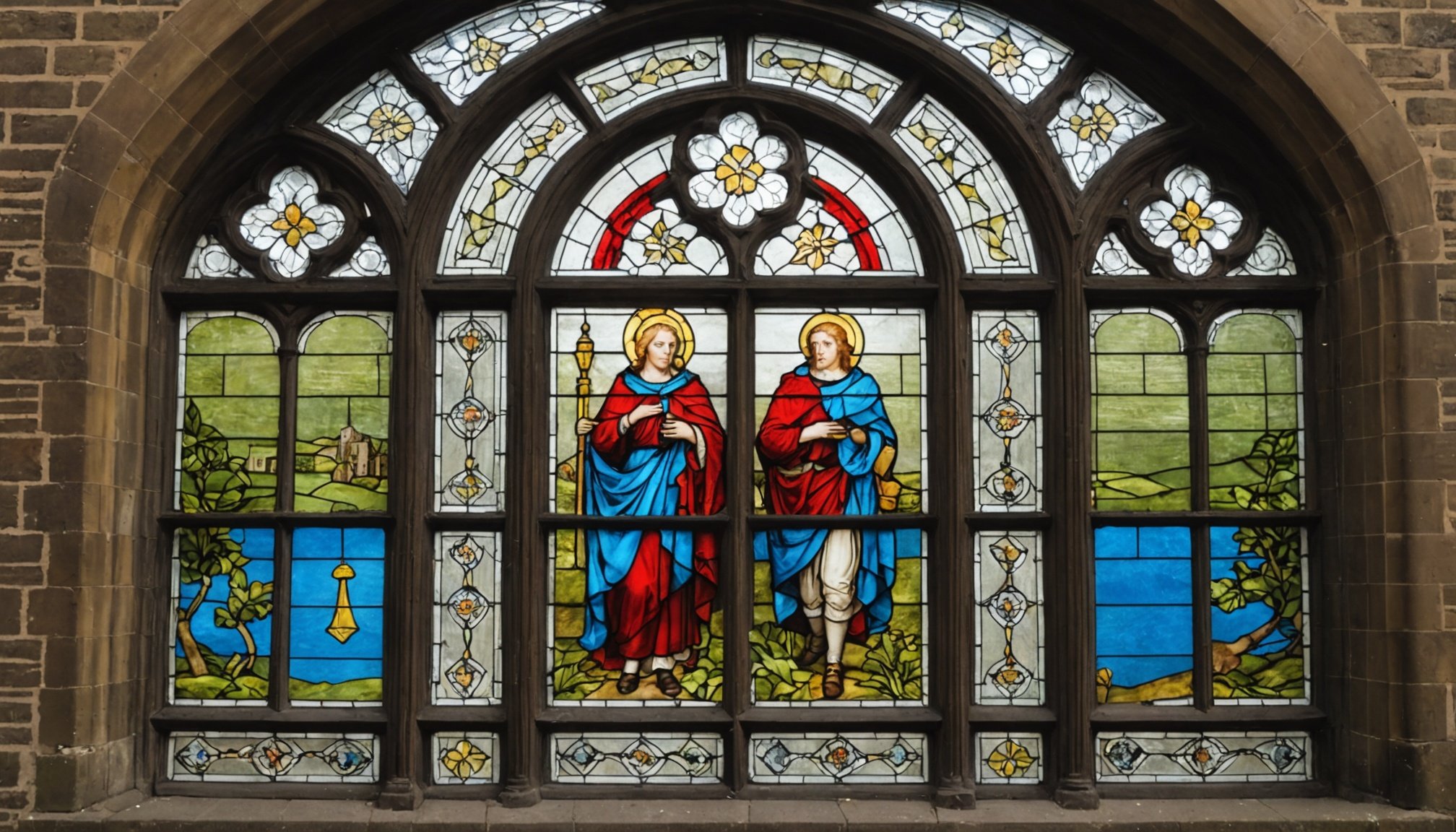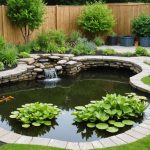Understanding Stained Glass Windows
Stained glass windows are not just beautiful artworks; they hold significant historical value, especially in heritage homes. In the UK, these windows can be traced back to the medieval period, where they were predominantly used in churches and manor houses. They told stories, imparted biblical teachings, and showcased the craftsmanship of the era. Their cultural and aesthetic importance makes them indispensable in preserving historical identity.
However, as time progresses, stained glass windows often face numerous challenges. Weathering and pollution can lead to physical degradation. The paint may flake off, or the lead strips might weaken, threatening the integrity of the artwork. These issues are common in older structures, necessitating stained glass restoration to preserve the historical integrity.
A lire aussi : How do you plan a kitchen layout in a UK terraced house for maximum efficiency?
Stained glass restoration isn’t just about repairing damage; it’s about maintaining a link to the past. Specialists use traditional techniques to ensure that the restored pieces remain true to their original designs, ensuring continuity of history. Restoration also involves understanding the specific conditions that affect stained glass, such as moisture control and structural reinforcement, vital for preventing future damage. Therefore, stained glass windows embody both artistic beauty and a tangible connection to history.
Assessment of Damage
Evaluating the condition of stained glass windows requires meticulous attention to detail. When conducting a damage assessment, it is crucial to first identify the various types of damage commonly seen in these delicate structures. Common issues include cracks in the glass, paint loss, and deterioration of the lead cames holding the glass pieces together.
En parallèle : Top Plants for Crafting an Effective Privacy Screen in Your UK Urban Garden
To begin the evaluation, identify visible cracks, which may indicate structural stress or impact damage. Examine paint loss, typically affecting artistic imagery on the glass, which is often due to fading from environmental exposure. Additionally, the lead cames may show signs of corrosion or weakening, compromising the integrity of the window.
Tools for a thorough condition evaluation are essential. Use a magnifying glass to inspect intricate paintwork for signs of degradation. Infrared imaging can detect temperature variations indicating compromised glass integrity or moisture ingress. A lightbox can illuminate the glass from behind, highlighting subtle damage invisible to the naked eye.
Techniques such as photographing the panes under different lighting conditions help reveal obscured details. For a comprehensive assessment, combining visual inspection with these tools will result in a clearer understanding of the window’s state, ensuring appropriate restoration measures can be planned. This proactive approach safeguards both the historical and artistic value of stained glass windows.
Essential Materials and Tools
Restoring stained glass requires a careful selection of restoration materials and specialised tools. Here’s a guide to getting started with the essentials:
Restoration Materials
The main materials you’ll need include stained glass of various colours and textures, lead cames for holding the glass pieces, and flux to help solder the joints. High-quality glass paints and brushes are also critical for detailed restoration work, ensuring the glass retains its original brilliance and design integrity.
Essential Tools
A good set of tools for stained glass work is indispensable. Key items include a glass cutter with a carbide wheel, running pliers, and grozing pliers for precise adjustments. Safety is paramount, so sturdy gloves and safety glasses should always be worn. Soldering irons with adjustable temperature settings ensure clean and secure joints, while lead knives and stretchers allow for precise lead came adjustment and maintenance.
Sourcing Materials
In the UK, sourcing quality restoration materials can be achieved through specialised art supply shops and online retailers. Consider suppliers like Creative Glass Guild or Warm Glass UK for a range of options that cater specifically to conservation and restoration needs. They offer a variety of products, ensuring you have access to the best options for your stained glass restoration project.
Step-by-Step Restoration Techniques
When tackling the restoration techniques of stained glass, it’s essential to preserve its historical integrity while ensuring longevity.
Cleaning Techniques
Cleaning is a delicate task that must be performed with the utmost care to prevent damage. Proper cleaning methods involve the use of gentle, non-abrasive cleaning solutions specifically designed for stained glass. These can include a mixture of distilled water and mild detergents. Essential tools in this process are soft brushes and lint-free cloths. The step-by-step cleaning process begins with assessing the level of dirt and grime. First, dust the surface lightly with a soft brush, then gently apply the cleaning solution with a cloth. It’s crucial to rinse with clean water and dry immediately to avoid water spots.
Repair Techniques
For stained glass preservation, repairing cracks and breaks is essential. Techniques include using adhesive lead tape to stabilize small fractures. The releading process, where old lead came is replaced, requires expertise. Matching the existing colour and texture in paint restoration demands precision and a keen eye for detail. It’s vital to use authentic pigments to maintain the original aesthetic.
Reinstallation Best Practices
Effective reinstallation of stained glass panels involves guidelines that ensure security and alignment. Panels should be secured with sturdy framing, considering the weight and fragility of the glass. Assess the original framing carefully to decide if reinforcement is necessary. This ensures the artwork remains intact in its setting.
Safety Considerations
When involved in restoration work, safety considerations are paramount. Whether restoring antiques or valuable artifacts, employing protective measures is crucial to ensure the preservation of both items and personal well-being.
Recommended Safety Gear for Restorers
Restorers should equip themselves with safety gear tailored to the task at hand. Essential items include gloves, goggles, and dust masks. These prevent exposure to harmful substances and protect against potential injuries from sharp tools or chemicals.
Handling Fragile Materials Safely
When dealing with fragile materials, patience and precision are your allies. Always use appropriate tools, like soft-bristle brushes, to avoid damaging delicate surfaces. It’s advisable to have a clean, stable workspace to minimize the risk of items falling or being crushed.
Best Practices to Prevent Injury During Restoration
To minimise injury, prioritize ergonomic practices. Maintain a comfortable posture, and take regular breaks to reduce strain. Always be mindful of the immediate environment, removing any tripping hazards. Implementing these protective measures aids in fostering a safe restoration process.
By embedding safety into every step, restorers not only protect themselves but also uphold the integrity and value of the objects they care for.
Legal and Preservation Guidelines
Understanding preservation laws is essential for maintaining stained glass artifacts. These laws protect cultural heritage and ensure restorative actions respect historical integrity. Consulting with heritage organizations is crucial. They provide guidance on adhering to legal frameworks and offer expert recommendations for restorations.
Preservation laws often vary by region, making navigation complex. Local regulations may dictate the methods and materials permissible in restorations. Typically, laws aim to prevent damage to historical artifacts. Thus, engaging with heritage organizations that understand these intricacies is a wise move.
Navigating the legal landscape for stained glass restorations involves several steps. First, verify if the stained glass is registered under any heritage guidelines. If it is, specific protocols must be followed, often outlined by local authorities or heritage bodies. These may include approved techniques for cleaning and repairing the glass.
When planning restorations, obtaining permissions from relevant authorities is another important step. This ensures compliance with heritage guidelines and legal requirements. Documentation is often required, detailing the planned restoration approach and its impact on the artifact. Seeking approval ahead of time avoids potential legal pitfalls.
Adhering to these laws not only protects cultural history but also highlights the importance of preservation laws in maintaining our collective past.
Case Studies of Successful Restorations
Discover the charm of heritage restoration, where history meets skilled craftsmanship. Among the heartwarming restoration case studies in the UK, one notes the successful revival of stained glass masterpieces in Canterbury Cathedral. Following meticulous attention to detail, restorers ensured the cathedral’s ancient splendour was preserved, symbolising hope and history intertwined.
Examples of Renowned Restoration
Canterbury Cathedral is not alone. Wells Cathedral and York Minster highlight the transformative power of dedicated restoration projects. In both cases, restorers utilised traditional techniques, ensuring integrity while employing modern technologies to safeguard the works against future damage. These initiatives have elevated community engagement and boosted local tourism, enhancing appreciation for shared heritage and culture.
Lessons from Professional Restorers
Professional restorers stress patience and precision. They emphasize understanding the historical context of each piece. Trial and error, coupled with research into original construction methods, often guide projects to successful conclusions. Learning from these experts, it becomes evident that balanced creativity and respect for the original work are integral to preserving historic authenticity.
The Broader Impact on Communities
The impact of restoration extends beyond buildings. It fosters a sense of pride and unity within communities, showcasing their unique cultural identity. Engaging locals in the process often results in renewed interest in preserving historical landmarks, ensuring they remain appreciated by future generations.
Resources for Further Learning
Whether you’re new to stained glass restoration or looking to enhance your existing skills, there are diverse educational resources available for every enthusiast. Exploring books such as “The Art of Stained Glass Restoration” can provide a foundational understanding of techniques, while online resources like specialized forums and video tutorials offer practical insights.
For those seeking hands-on experience, various workshops and courses are available. These provide an invaluable opportunity to learn directly from seasoned professionals, allowing you to grasp intricate methods in a collaborative setting. Institutions and craft centres often host these events, offering a structured learning environment.
Networking is another powerful avenue for deepening your involvement in this field. Joining professional guilds or attending industry conferences can connect you with professional restorers and fellow enthusiasts. These events are excellent for exchanging knowledge, discussing challenges, and staying updated on the latest restoration practices.
In summary, a combination of comprehensive reading material, practical workshops, and meaningful networking can greatly enhance one’s proficiency in stained glass restoration. Engaging with these resources will not only refine your skills but also immerse you deeper into the vibrant community of stained glass artistry.











